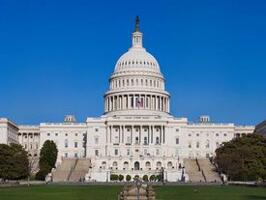It's Time To Bust Up the Big Banks
A Commentary By Scott Rasmussen
Americans have a healthy respect for free market competition and are resistant to government interference -- even when they don't like what the market is up to. For example, 69 percent of Americans believe that large corporate executives are overpaid, but only 17 percent want the government to regulate their pay.
In that context, it's remarkable that 50 percent of voters nationwide favor a plan to break up our nation's megabanks. Just 23 percent are opposed.
There are more than 5,000 banks in the United States today, but 12 of them control 69 percent of the banking industry's total assets.
Most Americans want these megabanks treated like any other. If a large bank reaches the point where it can no longer meet its obligations, just 25 percent support a bailout to keep it in business. But federal policy is just the opposite. The view from Washington, D.C., and Wall Street is that these firms must be propped up at all costs because their collapse would hurt the overall economy.
This provides what Richard W. Fisher, president of the Federal Reserve Bank of Dallas, calls "perverse market incentives." It lets big banks engage in risky behavior knowing they can't lose because the federal government will have taxpayers pick up the tab.
Voters understand this. Two out of three recognize that most of the bailout money went to those who created the problem in the first place. That's one reason why 75 percent expressed anger at the bailed-out banks in 2011; 49 percent were "very angry." Those numbers put the banks at the same level as Congress in the court of public opinion.
That public anger led to passage in 2010 of the Dodd-Frank Act, a law that scored political points but didn't address the biggest problem. The limits of that law as far as the largest banks are concerned were highlighted in a recent Senate report showing the misbehavior of JP Morgan Chase while racking up record trading losses last year.
It's hard to put much faith in regulatory answers given the revolving door between big banks and big government. For example, current Treasury Secretary Jack Lew received a $944,000 bonus for his work at Citigroup right after leaving the bank to join the Obama administration. Citigroup had the money because of a taxpayer bailout. His predecessors from both parties have similar ties.
Fisher acknowledges the good intentions of the Dodd-Frank law, but argues that it is "working against the core problem it seeks to address." That problem is that no bank should ever be in a position where it could be deemed too big to fail. The only solution is to break up the megabanks.
The way to do that is to end the government subsidies the banks receive that guarantee their survival. Currently, even the worst run big bank can access money on better terms than better run smaller banks. Why? Because of the government guarantee. Take it away, and the big banks would be forced to compete on the same terms as other banks.
Bloomberg News estimates that the 10 biggest banks receive subsidies of $83 billion. Fisher and others agree that the size of the subsidies is roughly the same as the total profit reported by these banks.
Not surprisingly, in a nation where people hate crony capitalism, just 7 percent think these subsidies should continue. Seventy-six percent want them to end.
End the subsidies. Break up the banks.
To find out more about Scott Rasmussen, and read features by other Creators Syndicate writers and cartoonists, visit www.creators.com.
COPYRIGHT 2013 SCOTT RASMUSSEN
DISTRIBUTED BY CREATORS.COM
See Other Political Commentaries.
See Other Commentaries by Scott Rasmussen
Rasmussen Reports is a media company specializing in the collection, publication and distribution of public opinion information.
We conduct public opinion polls on a variety of topics to inform our audience on events in the news and other topics of interest. To ensure editorial control and independence, we pay for the polls ourselves and generate revenue through the sale of subscriptions, sponsorships, and advertising. Nightly polling on politics, business and lifestyle topics provides the content to update the Rasmussen Reports web site many times each day. If it's in the news, it's in our polls. Additionally, the data drives a daily update newsletter and various media outlets across the country.
Some information, including the Rasmussen Reports daily Presidential Tracking Poll and commentaries are available for free to the general public. Subscriptions are available for $4.95 a month or 34.95 a year that provide subscribers with exclusive access to more than 20 stories per week on upcoming elections, consumer confidence, and issues that affect us all. For those who are really into the numbers, Platinum Members can review demographic crosstabs and a full history of our data.
To learn more about our methodology, click here.







